Jannes and Jambres, magicians opposing Moses, are uniquely mentioned in 2 Timothy 3:8, uncovering mysteries in biblical lore—dive deeper to reveal their story.
Where Are Jannes and Jambres Mentioned in the Bible
If you're familiar with the story of Moses confronting Pharaoh in Egypt, you might wonder about the identities of the magicians who opposed him. Interestingly, the names Jannes and Jambres aren't found in the Exodus narrative but are mentioned directly in the New Testament, specifically in 2 Timothy 3:8.
This passage provides a fascinating glimpse into how early Christians interpreted Jewish history and lore, linking these characters to a broader theological discussion. To grasp the full significance of their mention and how it ties into both historical context and apocryphal references, let's explore what led to their New Testament cameo and how their legacy has been interpreted over the centuries.
Key Takeaways
- Jannes and Jambres are directly mentioned in the New Testament in 2 Timothy 3:8.
- They are traditionally associated with the Egyptian magicians who opposed Moses, though not named in the Exodus narrative.
- Their story is used by Apostle Paul to illustrate resistance against divine authority.
- Outside of 2 Timothy, their tales are expanded in apocryphal texts and Dead Sea Scrolls, not the canonical Bible.
The Direct Mention

In the New Testament, specifically within Paul's second letter to Timothy, you'll find the only direct mention of Jannes and Jambres, where their opposition to Moses is highlighted. This brief reference, nestled in 2 Timothy 3:8, unfolds a rich tapestry of interpretation and speculation, primarily due to the textual absence of these figures elsewhere in the canonical texts. You're confronted with a fascinating instance where oral tradition infiltrates the written word, hinting at a broader narrative that the early church might've been familiar with, but which remains largely unexplored in the biblical canon itself.
The mention of Jannes and Jambres opposing Moses by their magic opposition introduces them as formidable adversaries, invoking imagery of a clash between divine mandate and human resistance through sorcery. This singular reference, devoid of additional context within the text, prompts an analytical deep dive into understanding how their story complements the broader themes of resistance against divine will and the folly of relying on human might against supernatural authority.
Moreover, the textual absence of Jannes and Jambres in the Old Testament, where one might expect their story to be situated, raises questions about the transmission of oral traditions into written scripture. This gap invites scholarly exploration into the intertextual spaces where oral tradition and scripture intersect, suggesting a methodical approach to understanding how figures like Jannes and Jambres transition from folklore to theological exemplars of rebellion against God's emissaries.
Historical Context
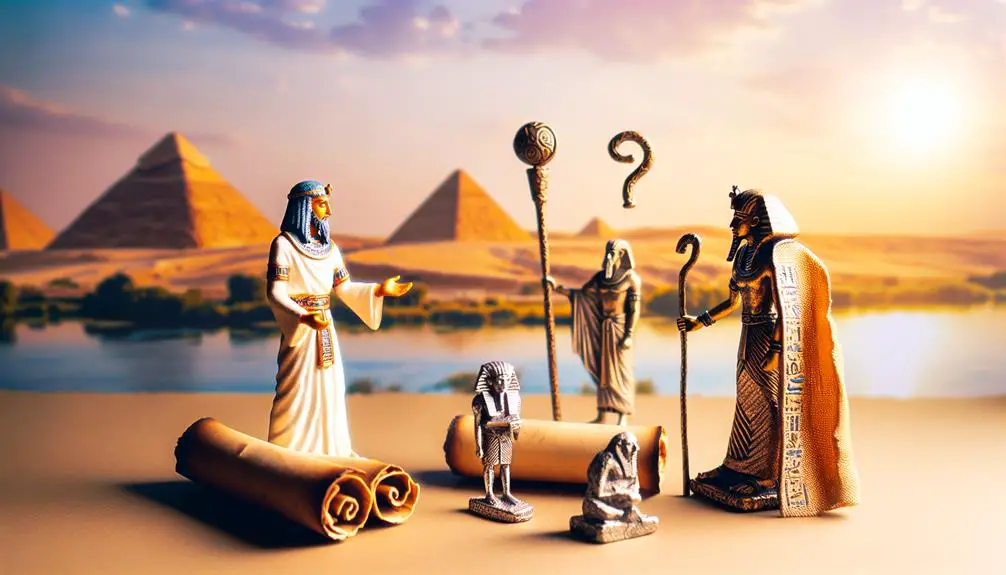
Jannes and Jambres' historical backdrop illuminates their enigmatic presence within the fabric of biblical narratives, offering a gateway to understanding their role in ancient traditions and their enduring impact on theological discussions. These figures are typically identified as Egyptian magicians who opposed Moses, embodying a clash between divine power and human sorcery. Their mention, albeit brief, in the Bible opens a window into the broader cultural and religious dynamics of the time.
To vividly imagine their historical context, consider the following:
- The Pharaonic Court: Imagine the grandeur and the mystical ambiance of the Egyptian court, where magic and religion were intertwined, and where Jannes and Jambres reportedly wielded their powers.
- The Plagues of Egypt: Picture the chaos and fear as these magicians confront Moses, attempting to replicate the divine wonders he performs, signaling a direct challenge to the power of the God of Israel.
- The Clash of Cultures: Envision the broader cultural conflict this narrative symbolizes, highlighting the tension between the emerging monotheistic beliefs of the Israelites and the polytheistic, magic-infused religion of the Egyptians.
Analyzing Jannes and Jambres within this historical and cultural framework not only enriches our understanding of their characters but also sheds light on their significant cultural influence. Their story exemplifies how ancient narratives could reflect and shape the religious and cultural identities of communities, underscoring the power of myth and legend in the ancient world. Through scholarly examination, their tale continues to offer insights into the complexities of faith, power, and resistance in antiquity.
Apocryphal References

Several apocryphal texts offer intriguing insights into the legends of Jannes and Jambres, expanding our understanding of their roles beyond the canonical biblical narrative. These texts delve into the mystical significance and cultural impact of these figures, revealing their deeper dimensions within ancient traditions.
Text |
Description |
Significance |
|---|---|---|
The Book of Jasher |
Allegedly mentions their involvement in Pharaoh's court and their opposition to Moses. |
Highlights the cultural impact by weaving their story into the broader narrative of Exodus. |
Pseudo-Philo's Biblical Antiquities |
Provides details about their magical confrontations with Moses. |
Emphasizes their mystical significance as formidable sorcerers. |
The Dead Sea Scrolls |
Some fragments are thought to reference figures resembling Jannes and Jambres in debates over purity laws. |
Suggests their influence extended into religious and legal discussions. |
Targum Pseudo-Jonathan |
Contains elaborations on their roles during the plagues in Egypt. |
Amplifies their cultural impact through added narrative detail. |
The Apocryphon of Jannes and Jambres |
A lost text, referenced in other ancient writings, presumably focused on their exploits. |
Its mere mention indicates the depth of their mystical significance in early literature. |
These apocryphal references contribute significantly to our understanding of Jannes and Jambres, providing a richer, more nuanced portrayal of their characters. They underscore the duo's importance in ancient lore, highlighting their roles not just as oppositional figures to Moses, but as individuals of considerable mystical significance and cultural impact. Through these texts, you gain a clearer picture of why these figures have fascinated scholars and laypeople alike for centuries.
New Testament Connection
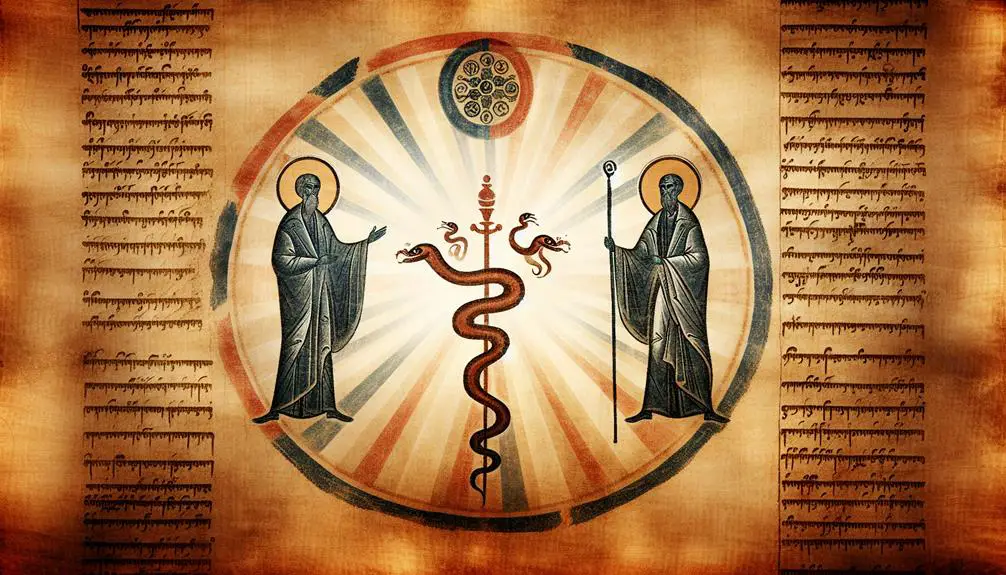
The New Testament subtly acknowledges the existence of Jannes and Jambres, illuminating their roles through a brief mention that bridges their legendary opposition to Moses with early Christian thought. This acknowledgment comes from the Apostle Paul, who draws on their story to enhance his teachings. By referencing these figures, Paul taps into a broader narrative, connecting the dots between the magicians' defiance and the challenges faced by early Christians.
- Paul's Teaching: In his second letter to Timothy, Paul warns about individuals who resist the truth, likening their behavior to that of Jannes and Jambres opposing Moses. This analogy serves not only to recall the magicians' defiance but also to frame it within a context of moral and spiritual rebellion against God's messengers.
- Magicians' Defiance: The brief mention of Jannes and Jambres in the New Testament serves as a vivid illustration of resistance against divine authority. Their opposition to Moses, as recounted in Exodus, is used metaphorically to discuss contemporary opposition to the gospel.
- Intellectual Engagement: Paul's use of these figures encourages a deeper intellectual engagement with the scriptures. By referencing characters familiar to his audience through Jewish oral tradition, he bridges the gap between the Old and New Testaments, enriching the fabric of Christian teaching with layers of historical and theological significance.
In this manner, the New Testament connection to Jannes and Jambres not only acknowledges their historical roles but also integrates their story into the broader canvas of early Christian thought, illustrating the timeless relevance of their defiance in the face of divine authority.
Legacy and Interpretations
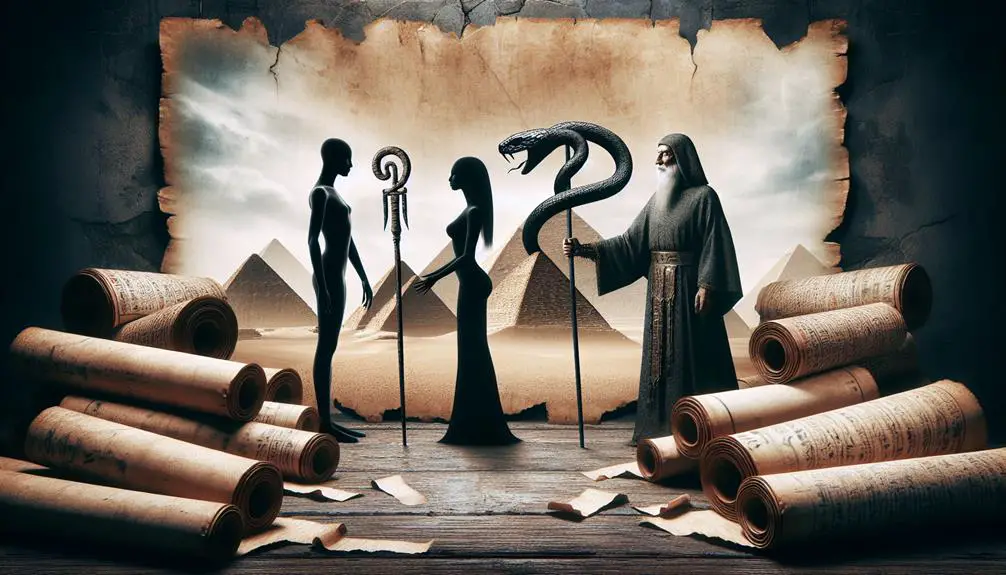
Exploring the legacy and interpretations of Jannes and Jambres opens up a rich field of scholarly inquiry, inviting you to consider how these figures have been understood and reimagined through centuries of Judeo-Christian thought. Their story, though briefly mentioned in the New Testament, has sparked a plethora of interpretations, each shedding light on different facets of their roles as both opponents and examples in biblical lore.
Aspect |
Interpretation |
Implications |
|---|---|---|
Biblical Role |
Magicians opposing Moses |
Demonstration of divine power |
Artistic Depictions |
Featured in various artworks and literature |
Influence on cultural portrayal of biblical themes |
Modern Implications |
Symbols of resistance against divine authority |
Discussion on the nature of faith and rebellion |
You'll find that Jannes and Jambres have been depicted in countless artistic works over the centuries, from medieval manuscripts to modern paintings. These artistic depictions not only provide a visual representation of their supposed confrontation with Moses but also reflect the evolving perspectives on their story within different historical and cultural contexts.
Moreover, the modern implications of Jannes and Jambres' narrative extend beyond mere historical curiosity. They serve as a focal point for discussions around the nature of belief, the concept of resistance against perceived divine mandates, and the human tendency to challenge authority. This ongoing dialogue ensures that the legacy of Jannes and Jambres remains relevant, continually prompting you to question and explore the deeper meanings behind their story and its impact on both religious thought and cultural expressions.
Frequently Asked Questions
How Have Different Cultures and Religions Besides Judaism and Christianity Interpreted the Story of Jannes and Jambres?
You'll find that various cultures and religions beyond Judaism and Christianity have delved into the story of Jannes and Jambres, interpreting it through lenses of magical practices and cultural syncretism. These narratives often emphasize their roles as magicians opposing Moses, blending the story with local beliefs and traditions.
This analytical approach reveals a rich tapestry of interpretations, where scholarly analysis shows how these figures are woven into the broader fabric of global mythologies and spiritual teachings.
Are There Any Archaeological Findings or Historical Evidence That Confirm the Existence of Jannes and Jambres Outside Biblical and Apocryphal Texts?
You're diving into whether there's archaeological or historical evidence for Jannes and Jambres outside religious texts. Unfortunately, direct proof like Jannes' genealogy or Jambres' folklore in archaeological records is elusive.
Scholars methodically analyze ancient texts and artifacts, seeking connections, but so far, evidence directly attributing to these figures remains speculative. Your exploration is analytical, scrutinizing what's known and acknowledging gaps in historical documentation regarding these enigmatic figures.
How Have Depictions of Jannes and Jambres Evolved in Modern Media, Such as Movies, Literature, and Art?
In modern media, Jannes and Jambres have been reimagined through the lens of magic realism and cinematic adaptations. These reinterpretations delve into their legendary roles as magicians, enhancing their mystique and significance.
Literature often explores their complex characters, while art captures their essence in visual form.
Movies, leveraging dramatic visuals and storytelling, bring their confrontations and magic to life, showcasing a nuanced evolution of these figures in contemporary culture.
What Psychological or Moral Interpretations Have Been Attributed to the Characters of Jannes and Jambres in Contemporary Theological or Philosophical Discussions?
In contemporary theological or philosophical debates, you'll find Jannes and Jambres often symbolize moral ambiguity and psychological resilience. Scholars argue their actions and decisions reflect complex moral landscapes, challenging simplistic notions of good and evil.
Their resilience against adversities is analyzed as a metaphor for enduring faith or, conversely, persistent defiance. This nuanced interpretation invites you to reconsider the depth of biblical antagonists within a modern moral and psychological framework.
How Do Jannes and Jambres Feature in Educational or Pedagogical Materials for Teaching Biblical History or Moral Lessons in Various Religious or Secular Contexts?
You'll find that Jannes and Jambres are used in curriculum development to teach about magic ethics and the complexities of moral decisions. Their story, often embedded in lessons on biblical history, serves as a critical case study.
Educators leverage their narrative to spark discussions on morality, challenging students to analyze the ethical dimensions of their actions. This approach not only enriches the learning experience but also cultivates a nuanced understanding of biblical teachings.
Conclusion
As you've journeyed through the shadowed corners of biblical lore, you've uncovered the enigmatic figures of Jannes and Jambres. Their names, whispered once in the New Testament, echo tales of magic and defiance against Moses.
Though their legacy is shrouded in the apocryphal and historical fog, their story intersects with the broader narrative of faith, power, and resistance. Analyzing their tale not only enriches your understanding of ancient texts but also invites reflection on the enduring nature of myth and memory in sacred scriptures.

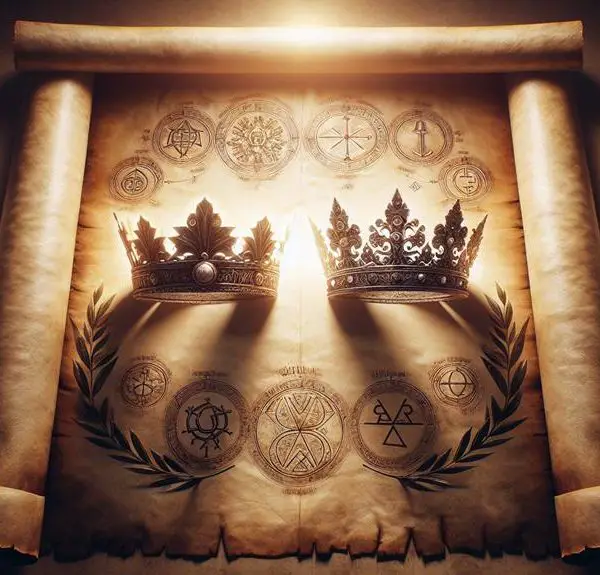
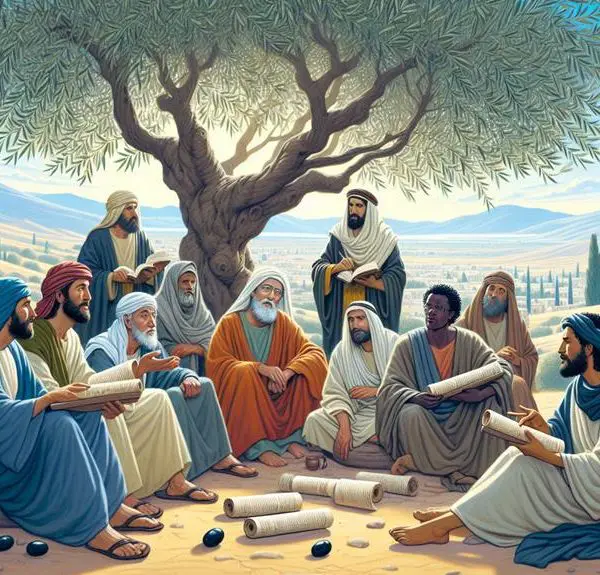
Sign up